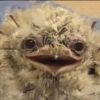The following below is from another thread of mine that I copied and pasted here to save time...
Thanks for helping!
Note: I'm sorry for anything I did wrong, I'm a beginner in ant keeping and, of course, feel free to criticize me for improvement. I will also constantly be updating this forum and possibly the other one (go all the way down this topic to see the link below or just go to "Keeping Ants" if you want to have a look at it for yourself).
1. This queen was collected in Hialeah, Florida, USA. There's obviously nothing that have to do with mountains here, it's pretty flat from the area where I got her.
2. I found her on the edge of a sidewalk about half a block from where I live between a lawn and the street. On that sidewalk, there was an area that had some dirt which was the location that I encountered a group of queens. I caught the queen near other queens (there were about five others, definitely more farther away because I kept on encountering more queens but from other nearby places).
3. Her gaster is pretty big and it's kind of black and brown (see the picture). There are also lines on the gaster which look like kind of yellow or like a caramel color. The rest of the body is like a mix of brown and black (look closely at the second picture).
4. Her legs, if you notice are black but at the end of them, they have a color that looks caramel. The antennae's are also pretty big and they're shaped like an "L". She also has a brown head with black eyes.
Note: I don't know how to turn the pictures in the links into images, so I apologize for that.
Here are two pictures of my queen (copy and paste the link on the URL or just click on the link if it takes you there):
This is the first one, which I took on the day I got her, which was yesterday (5/5/2016).
https://gyazo.com/8a...522d10275c331b0
This is the second picture (much more detailed), which was taken the day after I caught this queen ant (5/6/2016).
https://gyazo.com/c0...90924dbc6cbf78e
This is the third picture (you can kind of see her head better).
https://gyazo.com/63...8c3e2b2d9794666
This is the fourth picture (you can see more of her abdomen and you can also see the legs better):
https://gyazo.com/55...44cac8f35e5fc87
--------------------------------------------------------------------------------------------------------------------------------------------------------------------------------------------------------------------------------------------------------------
In the beginning, when I would take her out of the closet, she would start going to the cotton that blocked the opening of the test tube and she was biting it. She doesn't really have that behavior now (I'm trying to be more gentle).
Also, I've been observing my ant queen and she's been digging up on the cotton that is blocking the water for a while now and it looks like she made a small hole... <----- That was on the first test tube setup (You'll understand if you keep reading or go down).
If you need any pictures or something else in order to verify the genus and/ or species of the ant, or something else that's important, feel free to ask.
Also, I'm open to any helpful advice on improving.
Thank you so much for your help, I really appreciate it because I don't know how I should take care of my ant queen because I don't know how to identify the genus nor the species of an ant.
P.S. : If you want to know more about my queen ant, go click one or two of the links below:
http://antfarm.yuku....en#.Vy5R0fkrKM8
http://antfarm.yuku....62#.Vy5SCvkrKM8

















